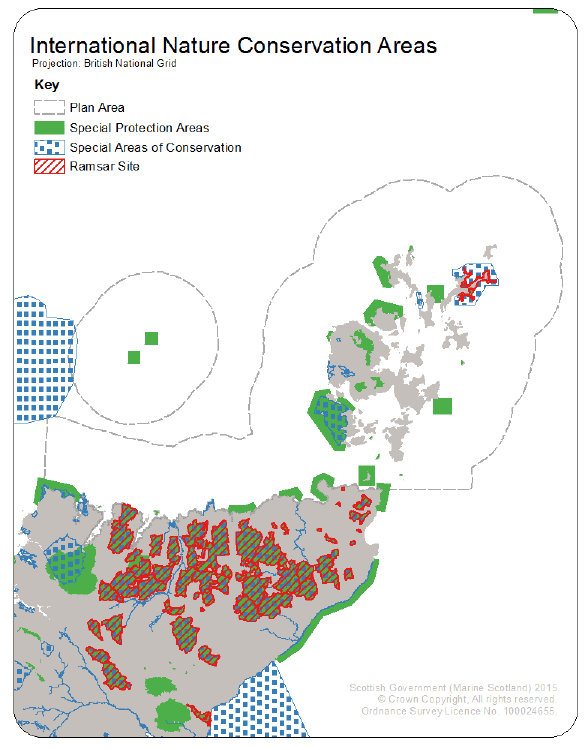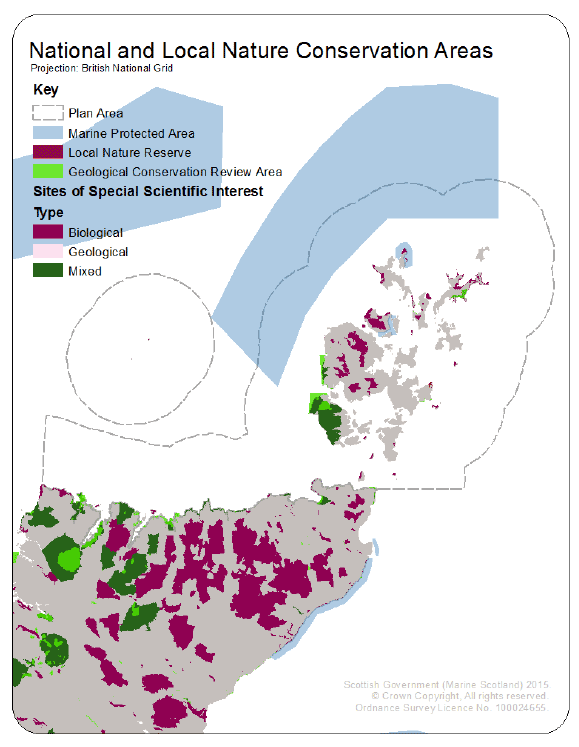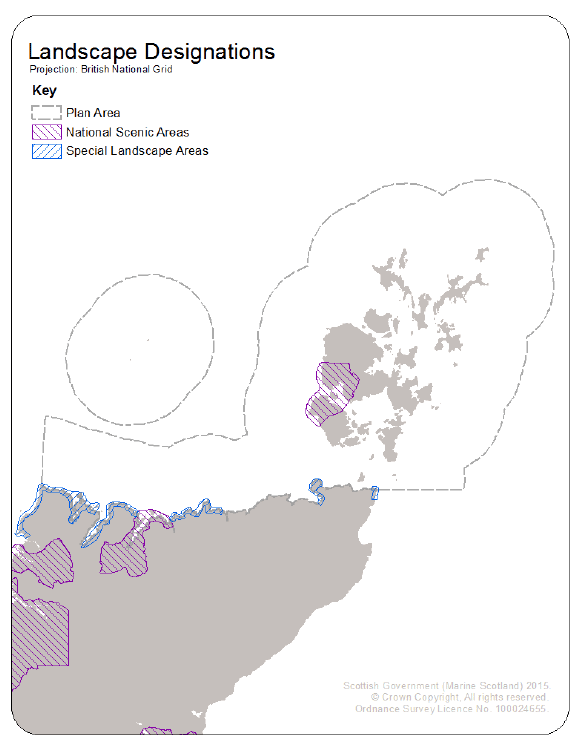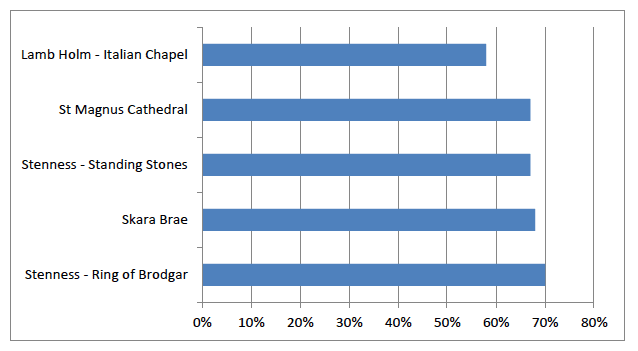Pilot Pentland Firth and Orkney Waters Marine Spatial Plan - Socio-Economic Baseline Review
This Socio-Economic Baseline Review provides a regional overview of the Pentland Firth and Orkney Waters area for the pilot Pentland Firth and Orkney Waters Marine Spatial Plan. It also informs the Sustainability Appraisal for this Plan.
14 Tourism
14.1 Spatial Extent and Intensity of Activity and Interests
14.1.1 This section provides information relating to the national and regional value of general tourism. Tourism is often associated with other specific recreational activities including marine ecotourism, tourism associated with cultural heritage, recreational boating and a range of other water sports. This section gives a descriptive overview of general tourism, ecotourism and tourism associated with cultural heritage.
14.1.2 There are several Special Protection Areas ( SPAs) and Special Areas of Conservation ( SACs) in the PFOW area. Special Protection Areas ( SPAs) are classified under the Birds Directive, which requires the Member States of the European Community to identify and classify the most suitable territories, in size and number, for certain rare or vulnerable species and for regularly occurring migratory species. SPAs are intended to safeguard the habitats of the species for which they are selected and to protect the birds from significant disturbance. These are shown in Figure 18.
14.1.3 Nature based tourism in Orkney and Caithness is a vital component of the tourism industry in the region. This includes wildlife reserves and nature trails in the coastal areas of Dunnet Head and Duncansby Head. Royal Society for the Protection of Birds reserves are popular bird watching attractions for tourists. Figure 19 shows the national nature conservation locations and Figure 20 the landscape designations in the PFOW area.
Figure 18 International Nature Conservation Areas in PFOW area [66]

Figure 19 National Nature Conservation Areas in the PFOW area [67]

Figure 20 Landscape Designations in the PFOW area [68]

14.1.4 There are a number of wildlife cruise operators in Caithness such as John O'Groats Ferries which provide wildlife cruises and day trips to Orkney. The Caithness coast and Orkney are also prime spots in the UK to observe the Northern Lights (Aurora Borealis).
14.1.5 The Heart of Neolithic Orkney World Heritage Site ( HONO WHS) comprises a group of sites on Mainland Orkney which date from 3,000 - 2,000 BC. The sites are: Skara Brae settlement, Maeshowe chambered tomb and the Barnhouse Stone, the Stones of Stenness and the Watch Stone, and the Ring of Brodgar and associated monuments. The Orkney 2012/2013 Visitor Survey [69] identified the visitor attractions most likely visited; Figure 28 highlights the importance of cultural heritage sites to the tourism industry in Orkney.
Figure 21 Most visited attractions Orkney (2013/14) [69]

14.2 Economic value and employment
14.2.1 The Orkney Visitor Survey involved a face-to-face exit survey of visitors to Orkney, a post-visit online survey and a face-to-face calibration survey of visitors to inform volume and value estimates. It showed that Orkney attracted 142,816 overnight/day visitors in 2012 - 2013 (Oct 2012 - Sept 2013). By trip purpose, 65% were holiday visitors, 18% business visitors and 17% visiting friends and relatives ( VFR). Total expenditure was estimated to be £31 million (shown in Table 28).
Table 28 Total annual volume and value (2013) [69]
| Purpose | Number of visitors | Average spend per trip (£) | Total spend (£) | Share of total spend (%) |
|---|---|---|---|---|
| Holiday | 92,268 | 217 | 20,061,116 | 65 |
| VFR | 24,437 | 238 | 5,821,934 | 19 |
| Business | 26,111 | 200 | 5,214,987 | 17 |
| Total | 142,816 | 218 | 31,098,038 | 100 |
14.2.2 The 2013 Orkney Cruise Survey [70] sampled 10 Cruise ships; 2,511 passengers and 659 crew members responded to the survey. The report estimated that the cruise ship industry generated £3.1m for the local Orkney economy through passenger and crew expenditure from 73 Cruise Ship visits with 51,000 passengers. The findings of the direct impacts are summarised in Table 29 below.
Table 29 Cruise Ship Economic Impact in Orkney [69]
| Industry | Direct Expenditures | Direct Employment | Direct Compensation |
|---|---|---|---|
| Wholesale & Retail Trade | € 187,047 | 7 | € 123,300 |
| Transportation & Utilities | € 1,438,636 | 11 | € 376,700 |
| Hospitality | € 795,280 | 3 | € 50,800 |
| All Others | € 323,208 | 4 | € 114,200 |
| Total | € 2,744,171 | 25 | € 665,000 |
14.2.3 Direct expenditure has been calculated by multiplying the average expenditure of passengers and crew by the estimated number of passengers and crew (€55 and €10 respectively) with the survey estimating that this output resulted in the direct employment of 25 residents of the Orkney Islands (with wages totalling €665,000).
14.2.4 Tourism in Caithness and North Sutherland ( CNS) is dominated by overnight tourists and day visitors. A visitor is classified as a tourist if his/her trip includes an overnight stay. Overnight tourism demand driven by two main sectors: Non-Discretionary Business Tourism; and the Leisure Tourism / Visiting Friends and Relatives ( VFR) sector. Ambitious for Tourism Caithness and North Sutherland estimate that the total direct expenditure from the overnight tourism sector in CNS is calculated as £35.2 million. [71] This accounts for 6.2% of all overnight tourism expenditure in the Highlands (see Table 30). However given that only a small part of CNS covers north coast this figure will overestimate the direct impact on the PFOW area.
Table 30 Total expenditure from overnight tourism in CNS [71]
| Type | Expenditure |
|---|---|
| Leisure | £18,268,155 |
| Business | £9,206,158 |
| VFR | £7,763,879 |
| Total | £35,238,192 |
14.3 Historic and future trends
14.3.1 There is no information specific to the PFOW area on future trends in tourism, however these will be dependent on trends in the wider economy.
14.4 Data Gaps and Limitations
14.4.1 Whilst many of the popular tourist attractions in the PFOW are in coastal locations, the tourism figures in this section will naturally overstate the impact of tourism on the marine sector. Caution must be applied to these figures particularly with regard to double counting the impacts of recreational activities covered in the next section. Research commissioned by Marine Scotland is underway which aims to add greater data coverage to the marine tourism and recreation sector across Scotland, with the PFOW area being used as a case study.
Contact
There is a problem
Thanks for your feedback